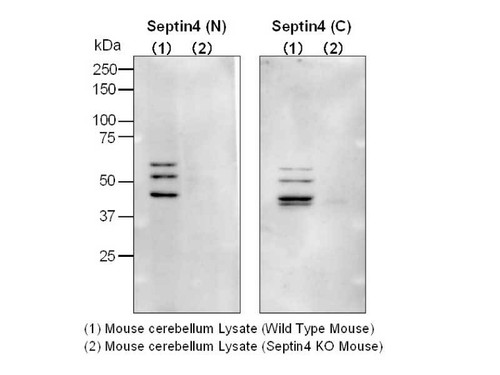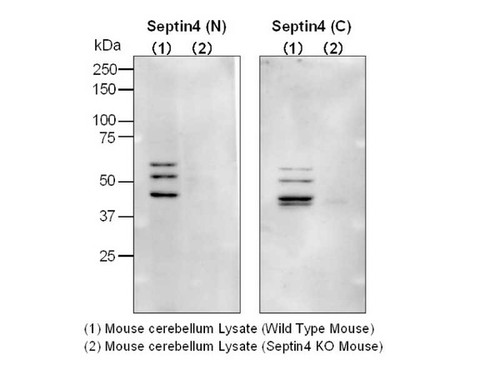A cytoskeletal or scaffold protein family named “septin” has been shown to be involved in diverse phenomena in the living body, including cell division. The term “septin” is derived from “septation,” which means division. The protein was discovered as a GTP-bound protein (a polymer) indispensable for the division of yeast cells. Several to dozens of septin subunits are linked together to form filaments tens of nanometers in length. Multiple such filaments combine to form structures assuming the shapes of ribbons, rings or spirals, measuring on the order of submicrons in size. In multicellular organisms, septin is known to be involved in cell division as well as in diverse cell functions after differentiation, although the exact nature of its actions remain to be determined. Among the members of the mammalian septin family, septin 4 (H5) is unique in terms of its primary structure and expression pattern. While its expression has also been demonstrated in the heart, liver and testis, it is most prominently expressed in some neurons and glial cells. It has been suggested that septin 4 may not usually be involved in cell division. Abnormal levels or locations of septin expression have been reported in humans with cancer, degenerative neurological diseases (e.g., Parkinsonism), male sterility, etc. For research use only, not for use in diagnostic procedures.
- application:
- IHC, WB
- Catalog number:
- 18987
- Datasheet:
- formulation:
- Lyophilized product from 1% BSA in PBS containing 0.05% NaN3
- immunogen:
- The N terminal part of synthetic peptide of Human Septin 4 (GKLDPYDSSEDDKEYVG)
- MSDS:
- notes:
- For research use only, not for use in diagnostic procedures.
The datasheet for this product (see above) is intended to serve as an example only. Please refer to the datasheet provided with the antibody for precise details. - Other names:
- Please see datasheet
- Protocol:
- purification:
- Purified with antigen peptide
- size:
- 100 µg
- specificity:
- Cross reacts with mouse and rat
- storage:
- Lyophilized product, 5 years at 2 - 8 °C, Solution, 2 years at -20 °C
- Species:
- Human
- Host:
- Rabbit







